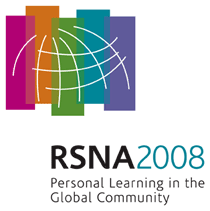
Abstract Archives of the RSNA, 2008
Pat Auueek Basu MD, Presenter: Nothing to Disclose
Volney Vol Dalsem MD, Abstract Co-Author: Nothing to Disclose
Susie Spielman, Abstract Co-Author: Nothing to Disclose
Gary M. Glazer MD, Abstract Co-Author: Consultant, Theranos, Inc
Grant, General Electric Company
Grant, Siemens AG
There has been increased discussion regarding the importance of a paradigm shift in Radiology toward a more patient-centered clinical role, which would enhance patient care and advance the profession. Our purpose is to examine the architectural, operational and political challenges in making this paradigm a reality.
We designed and built a 10,000 sqft outpatient imaging center, equipped with 2 new CT scanners and 3T MRIs. The radiology specialties include body, musculoskeletal, cardiovascular, and neurologic imaging. We analyzed the logistics of a radiology consultation, which includes the radiologist meeting the patient, explaining the procedure, interpreting the result, and communicating those results to the patient. We estimated the result of this model on throughput and revenue. We surveyed hospital executives and physicians from other clinical departments as well as potential patients for their opinion on this paradigm shift.
The Center was designed to optimize the interaction between radiologist and patient and differs greatly in lay-out compared to conventionally designed centers. Considerable concerns were expressed by other clinical chairs as well as hospital leaders concerning direct communication between the radiologist and patient. Physician objection included concerns: 1) that communication of imaging results might be counterproductive as imaging is only one component of the patient’s work-up and may be misleading 2) that radiologic results are sometimes “incorrect” 3) regarding loss of control of the patient and 4) that radiologists are not trained in direct communication with patients. Hospital leaders were concerned about loss of referrals from physicians opposed to this model as well as lower physician productivity from this altered mode of practice. Our analysis suggests a slight decrease in productivity from the added time required to provide direct communication. However, we are exploring some gain in RVUs from the E&M codes.
Patient-centered radiology with direct communication between the radiologist and patient faces considerable cultural barriers from referring physicians and hospital executives. Patients support this concept.
Patient Centered Radiology with direct patient communication can improve quality of care and make Radiology more important. We identify a number of barriers to achieving realization of this concept.
Basu, P,
Vol Dalsem, V,
Spielman, S,
Glazer, G,
Creating a Patient-centered Radiology Facility: Logistics, Barriers, and Recommendations in Implementing an Outpatient Imaging Center Where Radiologists Consult Directly with Their Patients. Radiological Society of North America 2008 Scientific Assembly and Annual Meeting, February 18 - February 20, 2008 ,Chicago IL.
http://archive.rsna.org/2008/6013754.html

